This Week in Anime
What is Cyber City Oedo 808?
by Steve Jones & Monique Thomas,
If you enjoyed Cyberpunk: Edgerunners, it's time to get reacquainted with this OAV from 1990. Directed by Vampire Hunter D: Bloodlust's Yoshiaki Kawajiri, these stories would go on to inspire future cyberpunk works (also there are vampires in this one, too!).
This series is streaming on RetroCrush
Disclaimer: The views and opinions expressed by the participants in this chatlog are not the views of Anime News Network.
Spoiler Warning for discussion of the series ahead.
 @Lossthief
@Lossthief |  @BeeDubsProwl
@BeeDubsProwl |  @NickyEnchilada
@NickyEnchilada |  @vestenet
@vestenet |
Steve
Nicky, we find ourselves in the anxious interval at the start of a new anime season, when the Preview Guide team is busy trudging through premiere after premiere. We at “This Week In Anime” have to wait a few weeks before we can crack jokes about the new shows. So you know that can only mean one thing: we have to call the cops. No, not the regular cops.

The cyber cops.
Nicky, we find ourselves in the anxious interval at the start of a new anime season, when the Preview Guide team is busy trudging through premiere after premiere. We at “This Week In Anime” have to wait a few weeks before we can crack jokes about the new shows. So you know that can only mean one thing: we have to call the cops. No, not the regular cops.
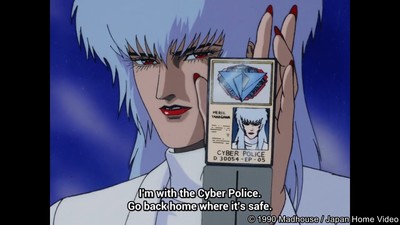
The cyber cops.
Nicky
We've got a lot of time to kill before we tackle anything new, and the extremely fabulous hardboiled cyber squad from the future might be the only ones who can handle the job. Just added to RetroCrush for premium subscribers, we have the early 90s three-part OVA Cyber City Oedo 808!

We've got a lot of time to kill before we tackle anything new, and the extremely fabulous hardboiled cyber squad from the future might be the only ones who can handle the job. Just added to RetroCrush for premium subscribers, we have the early 90s three-part OVA Cyber City Oedo 808!
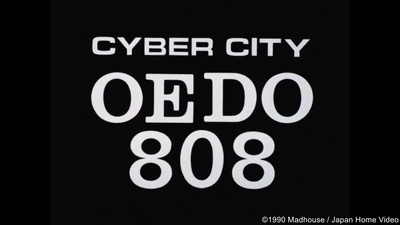
Sure, maybe it would have been more appropriate to cover this back when Cyberpunk: Edgerunners was still fresh, but some things never go out of style. And one of those things is aesthetically pleasing techno dystopias that distract us from our own comparatively bland techno dystopia.




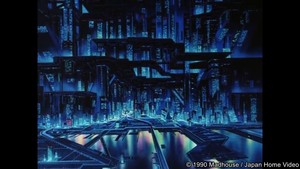
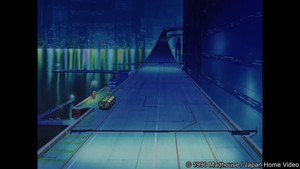
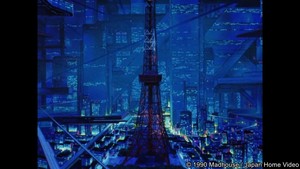
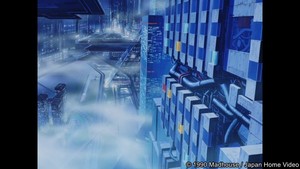
Style is a big factor in the direct-to-video era of anime, and Cyber City Oedo is pleasantly full of it. It's got full marks. All the things we love when we think of 80s and 90s action sci-fi flicks. Big cities, big hair, and electronic pop tunes.

The opening features a fantastic power ballad that's sure to feel like a throwback to when things were more neon.

The opening features a fantastic power ballad that's sure to feel like a throwback to when things were more neon.
It's a bona fide cyber slapper, for sure. More generally, it's also fun to finally get around to experiencing something foundational and recognize all the bits that trickled into later series and stories you've already enjoyed. Cyber City Oedo is a cult classic from over 30 years ago, so it's had plenty of time to marinate in the medium. For instance, let's take its basic conceit: a crew of criminals gets outfitted with explosive collars so they can be repurposed as tools in the middle of an ongoing war between law enforcement and outlaws.


And wouldn't you know it, that setup is shared by one of Oedo's direct descendants and one of my favorite anime from the past few years: Akudama Drive.
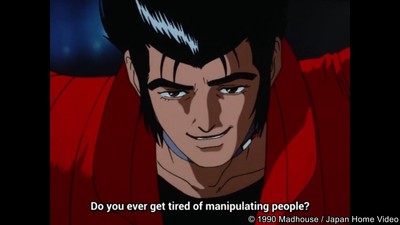
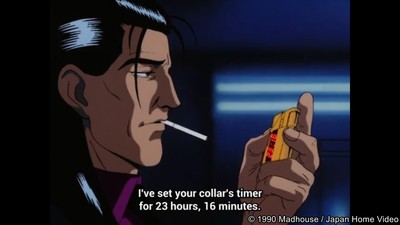
And wouldn't you know it, that setup is shared by one of Oedo's direct descendants and one of my favorite anime from the past few years: Akudama Drive.
It's stunning how well it pulls off its main objective while pulling other cultural influences of its time. It shares a lot of qualities with anime produced during the economic bubble period when serious well-budgeted violent standalone anime flourished, but it still sounds and looks goddamn cool. Characters dodge bullets and fall out of the sky to catch criminals without a second thought.

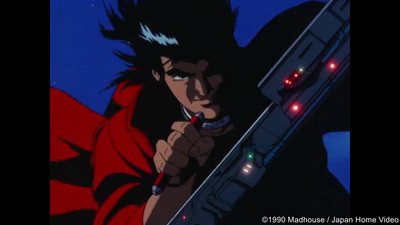
It's excellent! It shows its age, but this is a case where age is a point in its favor. Plus, it's confident as all hell. It's constantly throwing strong visuals and compositions at the audience, even for mundane things like a speedometer or a guy nursing his hangover.


Sengoku's also the most archetypal out of our three cyber anti-heroes, but the first episode compensates for this by giving him good one-liners and action set pieces. I will always argue for this: style is substance.


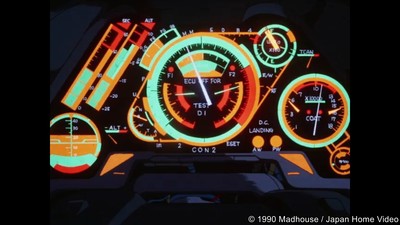
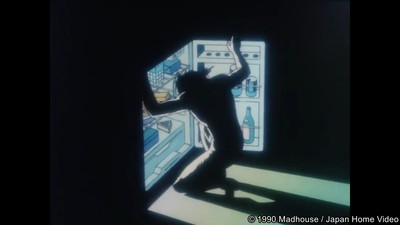
Sengoku's also the most archetypal out of our three cyber anti-heroes, but the first episode compensates for this by giving him good one-liners and action set pieces. I will always argue for this: style is substance.
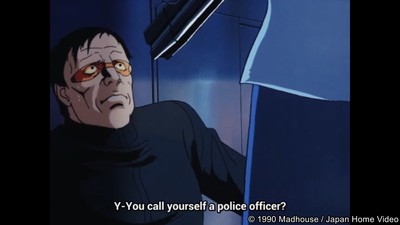
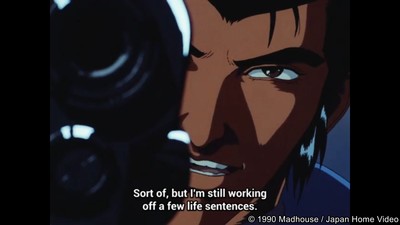
I will note that there are a lot of bright and fast flashing lights, so people who are sensitive should tread cautiously.
One aspect where showing its age is a point against Cyber City Oedo. I'm not even photosensitive, but some of those computer screen scenes are rough.
Cyber City Oedo 808 was directed by Yoshiaki Kawajiri, who directed and wrote a lot of seminal films and OVAs of the era. He's the original creator of the hyper-violent Ninja Scroll, made his directorial debut with Lensman: Secret of the Lens, and later directed Vampire Hunter D: Bloodlust and Birdy the Mighty. All of which are still recognized works. He doesn't direct as much nowadays but having started as an animator at MushiPro before it shut down in 1972 and still getting storyboard credits as recently as 2021, that's a pretty big career!
It's also funny to think back and consider that my first exposure to Kawajiri was his short in The Animatrix, a synthesis of Cyber City Oedo and many of his other OVAs and films. There's no way I appreciated that twenty years ago, but I can remember really liking his segment all the same.
I previously brought up the bubble era, 1986 to 1991, when the Japanese economy was so good they could toss all the money they wanted at animators to draw cool vehicles and somebody's guts getting eviscerated. But part of what made stuff from this era look SO GOOD isn't just the money but the freedom, time, and stability to develop the talents of multiple artists. So much of 80s cyberpunk anime only works thanks to the attention to detail that brings the setting and characters to life, like these insane depictions of advanced analog technology.


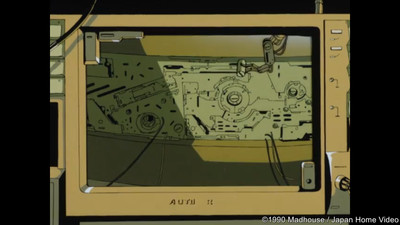
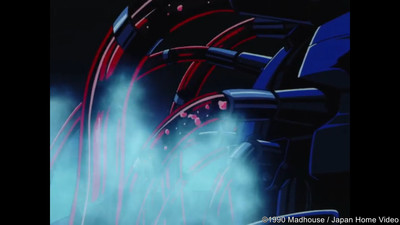
And Cyber City Oedo, in particular, needs that granularity and physicality since all three stories deal with the intersection between the body and technology. I mean, it's right there in the prologue too. The collars strip the protagonists' autonomy away. Their lives are digitized literally into numbers as the amount of time remaining in their sentence, which is an absurdly high number of years for all of them. Their lot is Sisyphean, but they each decide to work because it beats doing nothing. That's where the human component comes in.


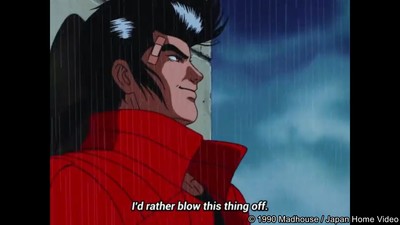

It's pretty clearly dystopian when risking your life for The Man beats being sentenced to a life in solitary space confinement. It plays into the hard-boiled stuff where none of them quite play by the rules. They're the right amount of competent yet cool scumbag ex-criminals that they're fun to watch. Sengoku comes off as pretty punk, and Merrill and Gabimaru, nicknamed Benten and Goggles, respectively, have their quirks and charms as a cold killer and a genius hacker. They are keenly aware of their circumstances as tools and don't hold back expressing displeasure about it.


Benten is even voiced by the late Kaneto Shiozawa, who used to be prolific at voicing cool, intelligent dudes before he died in 2000.
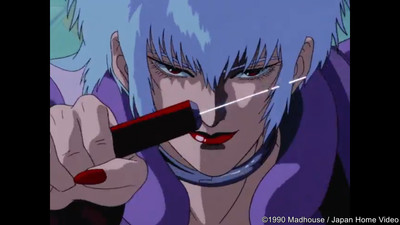
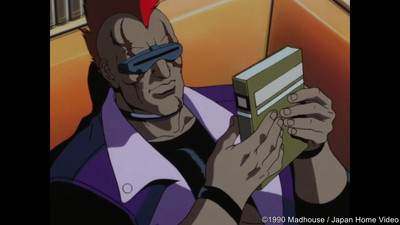
Benten is even voiced by the late Kaneto Shiozawa, who used to be prolific at voicing cool, intelligent dudes before he died in 2000.
Benten's unrestrained bishounen-chic is delightful. And Goggles surprised me the most. By appearances alone (mostly the mohawk), I assumed he'd be a thuggish bruiser, but he's more of a polymath. He can hack. He can code. He reads Chekhov. He's got a sick truck house. And he can kick ass.







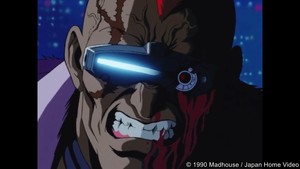
I love his truck-house library. I'm jealous. Backgrounds and art direction go a long way here. What sold me on Goggles is how he's the most determined to be free ASAP. The scene where he watched his target trigger his collar, trying to get it off in hopes of escape, was a harrowing and great use of color and light for suspense.



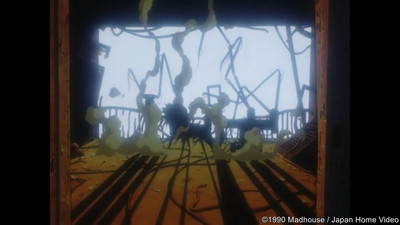
Yeah, it's a very darkly funny way to open the episode. They may be dogs of the police, but that doesn't mean they aren't looking for opportunities to chew through their leashes.


Of course, another main point of that episode, in particular, is that, despite how bad and dehumanizing their situation is, there are still people and groups in Oedo with even less of a moral compass than the police.

Like at least Hasegawa has some innate faith in the organic. Plus, he's voiced by Norio Wakamoto.


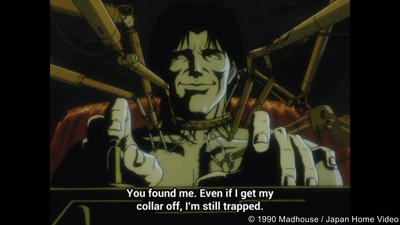
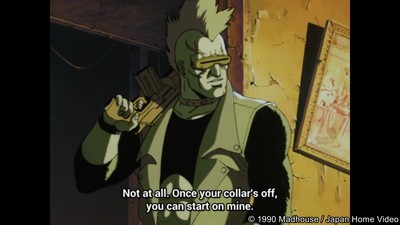
Of course, another main point of that episode, in particular, is that, despite how bad and dehumanizing their situation is, there are still people and groups in Oedo with even less of a moral compass than the police.
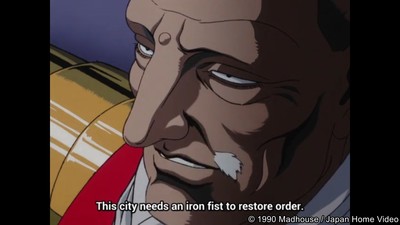
Like at least Hasegawa has some innate faith in the organic. Plus, he's voiced by Norio Wakamoto.


It's also playing into some samurai tropes with the implication that Hasegawa is a bit of a feudal lord, as in previous times as cities and populations grew, so did the amount of crime. Using ex-cons for labor became a practice. Some of the names have a historical theme, and the big man looks rather imperial. It sounds strange for your futuristic setting, but it's not, given this is the same dude that made Ninja Scroll. Plus, it's a neat comparison of periods of growth throughout history. While bringing in greater goods increased the quality of life, like stability and convenience provided by technology, it can also lead to greater evils.

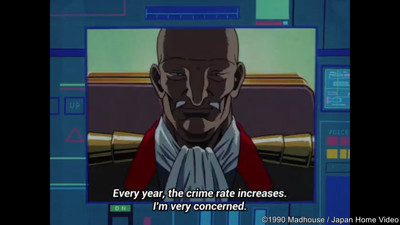
Greater but very rad-looking evils.




The military needs to work on its acronym game, though.

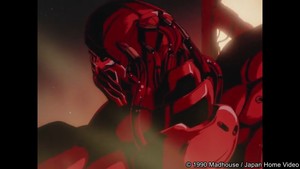

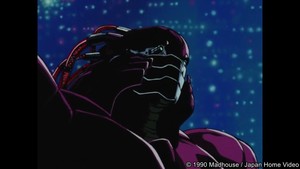

The military needs to work on its acronym game, though.

My brain can't NOT read or hear that as MOCOS (Spanish for snot/mucus).
Consider: Pui Pui Molcos
Someone can send me a guinea pig car-shaped tissue box cover as soon as possible, and we'll talk.
Questionable acronyms aside, the MOLCOS fight is the best action set piece in the OVA. It utilizes Tokyo Tower, a familiar landmark, and turns it into a menacing venue of cyber destruction. I also love how it ends with Goggles swinging around a piece of the structure. There's something very John Henry about his struggle and victory here.




It's sick, and MOLCOS's design and how it moves are downright freaky because it wouldn't be a dystopian cyberpunk without a bit of technological horror. I wouldn't say the setting of the world in Cyber City Oedo is super defined, but there's enough there to make you go "whoa." I equally enjoyed how the first episode goes from a standard search for a criminal hacker to somewhat supernatural when it turns out the target was a murdered employee whose spirit invaded the system as a form of vengeance using a bunch of wires to hoist his corpse.

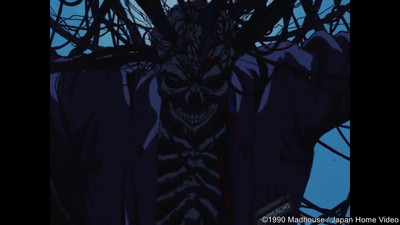
It's such a visually arresting reveal! Who cares about the logistics of it when you have a literal ghost in the machine trying to bring down a building so tall they call it a spacescraper? It's a familiar emotion and motivation but blown up to a terrifying scale thanks to technology and hubris. That's cyberpunk.

And you know what else is cyberpunk? Vampires.


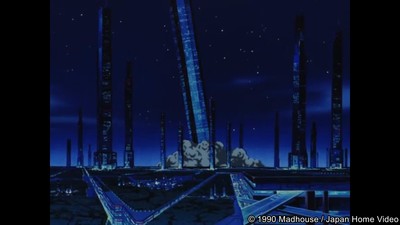
And you know what else is cyberpunk? Vampires.
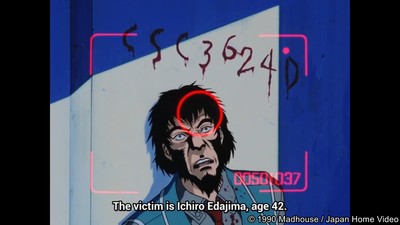
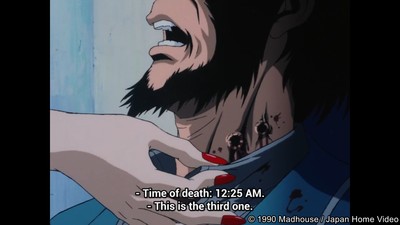
This also led to one of the most ahem liberal dub clips. It was the only context I had for this show before going in.
Still a badass line in the sub, though.


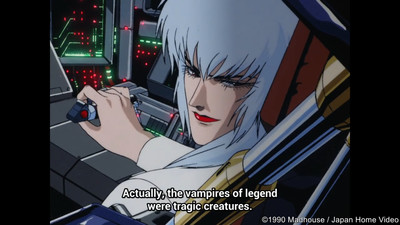
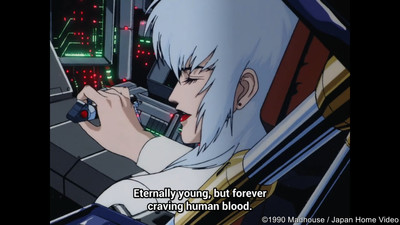
Oh yeah, whenever I get around to rewatching this, I'm definitely doing the dub. I did a two-minute sampling, and the four-letter words flowed like water. Seems like a fun time.
But even without that extra linguistic color, the third episode was my favorite. Benten takes the lead, and the result is fabulous from the first scene.




This looks like the opening to a shoujo tragedy, not a cyberpunk action OVA. And that's why I like this episode so much. It's the least conventional of the three, and as such, it stretches into the most bonkers territory.
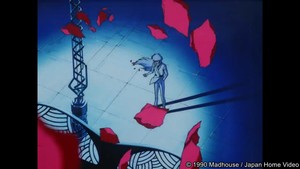
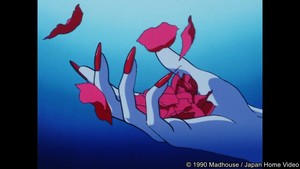
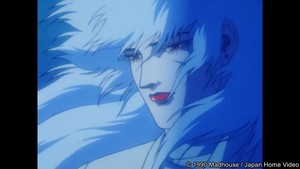
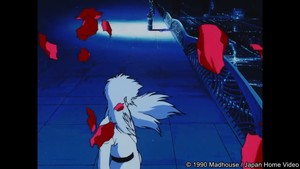
This looks like the opening to a shoujo tragedy, not a cyberpunk action OVA. And that's why I like this episode so much. It's the least conventional of the three, and as such, it stretches into the most bonkers territory.
The nickname Benten stems from the Goddess of Eloquence, Benzaiten (also known as the Buddhist Sarasvati). She is known to be associated with beauty, wisdom, and the arts, so it makes sense that our pretty boy would end up with the most abstract one while also feeling like the most indulgent.
People who know me may have also determined that very little could make me displeased about having a beautifully drawn man on my screen. Benten is a character up my alley, and I'm glad we got more of him than just being violent and having a pretty face.

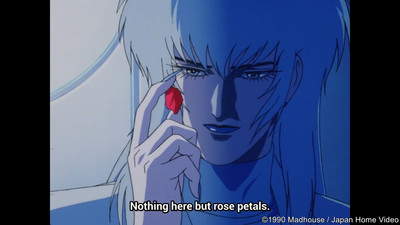
He really is perfect. He philosophizes about starlight. He has a ginormous mullet. He makes it through the entire OVA without chipping a single nail. Wish that we were all so talented.

His episode is certainly not wanting for style too. It embraces its vampiric roots and luxuriates in these spacious (and spacy) neo-gothic environments.




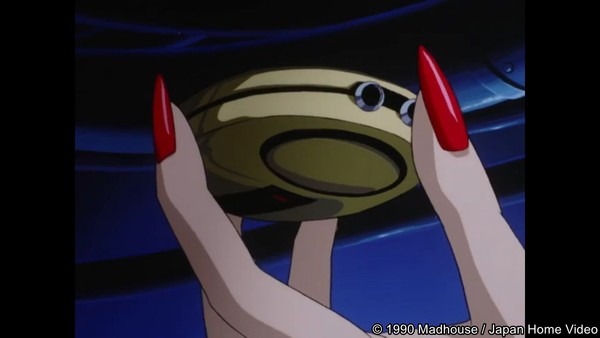
His episode is certainly not wanting for style too. It embraces its vampiric roots and luxuriates in these spacious (and spacy) neo-gothic environments.

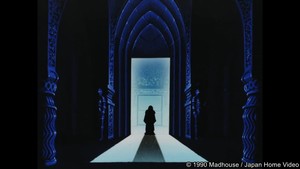
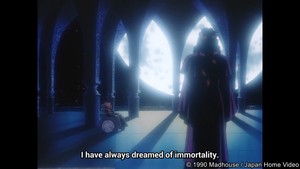

All the more reason to make me re-watch Vampire Hunter D: Bloodlust and the best use of the setting imo.
But also, there are many great lines and moments throughout all three OVAs, and it doesn't stop them from being some of the coolest shit you've ever seen. Ever wanted to know what it looks like when you try to kill a vampire with an airlock?
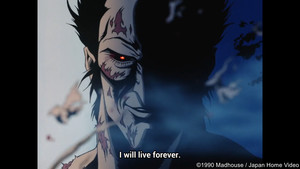
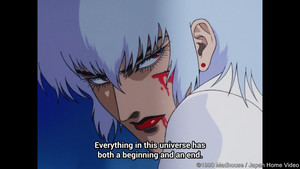
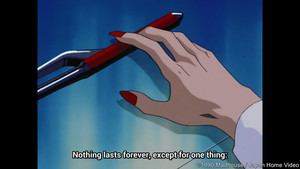
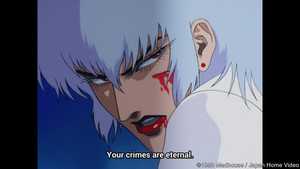
Let's just say you can tell that Total Recall had come out just the year prior.

Also, I wouldn't be able to live with myself if I didn't highlight the best character design of 1991. She's in the episode for only one minute, but that's all she needs.


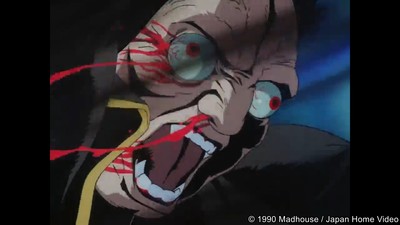
Also, I wouldn't be able to live with myself if I didn't highlight the best character design of 1991. She's in the episode for only one minute, but that's all she needs.
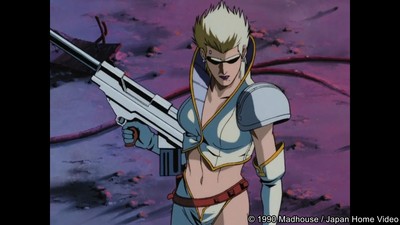
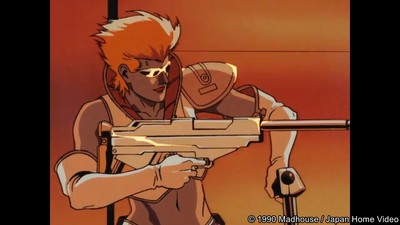
I'll follow up and say that I'm usually apprehensive about how old OVAs depict violence and women for pure shock value. While it could be better since most of the women introduced die, it never distracted me from the story. It doesn't have a huge emphasis on suffering. Even the few ultra-violent moments don't linger too long to ruin the tone, which is a feat considering the reputation of some of Kawajiri's other stuff.
Agreed, Cyber City Oedo's a lot more restrained than I was expecting. More pulpy than outright schlocky.
Well, maybe "restrained" isn't the right word for it, considering that Benten decapitates a cyber sabertooth tiger at one point. But I think you all get what I mean.


I find it all to be a statement of how well-paced and engrossed Cyber City Oedo is at presenting its own story. It's trying to be cool, glamorous, and enjoyable, but it takes itself seriously enough so that none of the ridiculously bright flashiness gets in the way of actual viewing. My eyes were fixated the whole time, like watching a singular star. Each episode has its concept and characters and is laser-guided by the dedication to the atmosphere.

As the bubble economy would pop the year after the last episode release, consider Cyber City Oedo as a pinnacle product of that former period of prosperity.
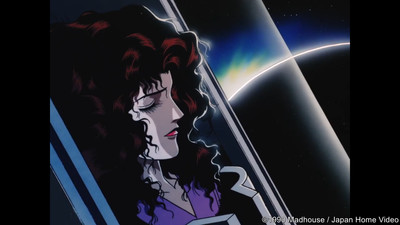
As the bubble economy would pop the year after the last episode release, consider Cyber City Oedo as a pinnacle product of that former period of prosperity.
However bygone its era, Oedo's wiry cyber tendrils reach into the present day and beyond. It's a cult classic that I think animators and fans alike can and do still take a lot from, whether you're drawn in by its tragedies, titillated by its triumphs, or just here for the aesthetic.

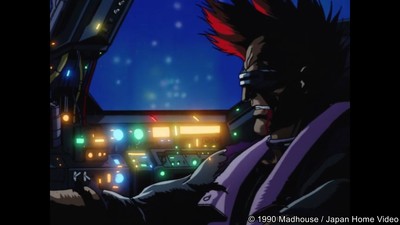
Trends in fashion and music may change, but having a good time with the boys remains timeless. Cyber City Oedo 808 stuck around for over three decades so that I could watch it. Let's help it stay a little longer. 'Til next time!

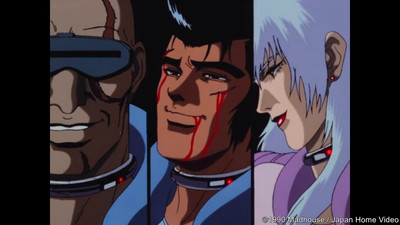
discuss this in the forum (4 posts) |